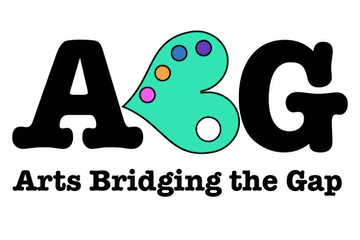New mural painted in Hollywood
Read the full story here: https://beverlypress.com/2021/10/new-mural-painted-in-hollywood/
ABC7 talks to us about how art plays a crucial role in social change
Artists reflect on BLM mural a year after the murder of George Floyd
HOLLYWOOD, LOS ANGELES (KABC) -- After the murder of George Floyd, communities around the country mourned the loss. In Los Angeles emotions were expressed through protests, marches and art, with multiple murals popping up across the city, including a 148-foot-long mural in Hollywood.
"We were trying to bring a message to everybody," said Jamie Masada. "You know, that hatred we don't need in this world."
Masada is the owner and founder of Laugh Factory and he teamed up with the organization Arts Bridging the Gap to hire five Black artists to paint the 148-foot-long mural on his property.
"The goal of the mural for us was to do something that would memorialize this moment," said Georgia Van Cuylenburg, founding director of Arts Bridging the Gap. "So that we don't forget, because change only happens over time."
Nearly a year ago they painted the mural with the goal of honoring the lives lost to social injustice and also to spark conversation, and they believe they did just that, but they also believe they still have a long way to go.
"As soon as we write a name then another name is going to have to be written tomorrow," said Noah Humes, the artist responsible for painting George Floyd in the mural. "And we're just really trying to fight for that to no longer be the case."
"I hope that a year later, you know that the statement Black Lives Matter, I hope that it means more to people than just an organization or something political," said PeQue Brown, the artist responsible for painting Breonna Taylor in the mural. "I hope that people really understand that Black lives actually matter."
Now nearly a year later, everyone involved in the project reflects back on the impact art can have on a movement.
"It's important to have pieces of art like this in the world so that we don't stop changing," said Van Cuylenburg. "That we continue to have these conversations and continue to think and continue to reflect and not repeat history."
"The hope is that a year later that we're smarter, wiser," said Brown. "And we're more compassionate, more loving, as a people, as a nation."
How Community Murals Promote Advocacy
Turning neighborhoods into canvases have been practiced for thousands of years now. Since the Paleolithic period, people have been painting the walls and ceilings--which transforms the view and creates exciting communities.
"Murals build a sense of community, they make it more welcoming and walkable, and they make you want to go there," said a mural artist, Grace McCammond. This is an observation from our initial impression of murals, which are always its aesthetic and emotional aspects. However, murals are also used to express social concerns, such as peace, justice, and equality.
Dialogue Through Art
Art can be a catalyst for change. The visual journey the murals provide are projections of human experience. These are the stories of the past depicted through several forms of painting. Most murals in a particular period are about history. The reason is it evokes powerful emotions, and these emotions are communicated to incoming generations to solidify principles or create new ones.
One prime example is The Great Wall of Los Angeles, led by Judith Baca, an activist from the 1970s. This half-mile long mural painting depicts California's origins and highlights the textbook marginalization of minorities from some ethnicities, races, and genders in their time. This art serves as a window from our past, which will continue to engage its residents and tourists for centuries. Educational institutions, families, and any other unit in Los Angeles's community will never get past this cultural landmark. A perfect example of reverberating dialogue through generations expressed through art.
Future of Murals and Movements
In this age of technology, digitalization is dominating almost every industry, even the arts. Opinions on art versus technology are rising. But, as we can see, it only improves along with it. Art and its stories are being swiftly passed around, with the help of the internet. The gap between ancient art and technology is an illusion. Organizations and individuals can now strengthen charity and development causes with simple online transactions—e.g., social media campaigns. For instance, a street art initiative in Los Angeles has reached lots of people's hearts inspired by the mural adorning led by Arts Bridging The Gap.
Shane Perry, a business specialist from Max Funding Australia, observed the surge of enterprises that revolve around community engagements through arts, performance, craftsmanship. He emphasized, "There are selfless individuals and groups whose visions are aligned to the overall betterment of humanity. These stories are inspiring, and we highly encourage causes like these. Funding businesses with altruistic attributes has always been fulfilling for loan companies like us."
To join these causes, you don't need power and prestige. All you need is the initiative. If you are interested in our immersive art programs, join us here.
____________________________________________________________________________
Written By: Mitchell Samuel
Mitchell Samuel is an Australian freelance writer. He has a passion for learning about global changes in business culture and specializes in entrepreneurship and innovation-related topics. When Mitchell isn’t at his desk, you’ll find him exploring National Parks.
The LA Times - 3D photogrammetry of our Mural on Sunset Blvd
The LA Times - 3D photogrammetry of our Mural on Sunset Blvd
Across L.A., Black Lives Matter murals appear like billboards for justice
TO READ CLICK LINK:
https://www.latimes.com/california/story/2020-08-12/black-lives-matter-murals-los-angeles









